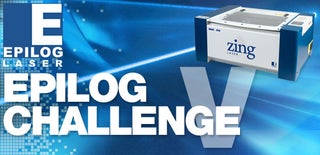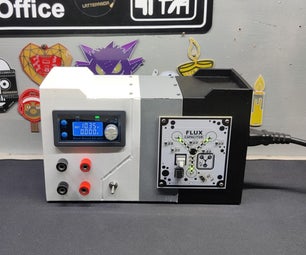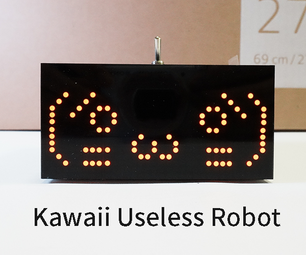Introduction: High Speed Photography
With this device you’ll be able to:
take pictures from anything you can sense or detect:
- movement
- sound
- …
You don’t need to modify your camera or flash for this.
It’s compatible with the old High Voltage flashes and the new TTL ones.
Why I did this project?
A friend of me who's really passionate about photography showed me some high speed photography examples. And how expensive the equipment you need is.
I said there must be a DIY solution for that and I started tinkering.
We've done some experiments and you can see the results in the pictures below.
for more pictures from Sanne
see here http://www.flickr.com/people/sannegovaert/
After following this instructable you'll be able to make such pictures too!!
What I would do with the zing
If I win the zing laser cutter then my lab is complete, and will I be able to go crazy.
I'll make: robots, enclosures, front panels, puzzles, build kits, moose heads, etch some cool things
I've been waiting a long time to make this instructable so I could join the zing contest and here I'm
take pictures from anything you can sense or detect:
- movement
- sound
- …
You don’t need to modify your camera or flash for this.
It’s compatible with the old High Voltage flashes and the new TTL ones.
Why I did this project?
A friend of me who's really passionate about photography showed me some high speed photography examples. And how expensive the equipment you need is.
I said there must be a DIY solution for that and I started tinkering.
We've done some experiments and you can see the results in the pictures below.
for more pictures from Sanne
see here http://www.flickr.com/people/sannegovaert/
After following this instructable you'll be able to make such pictures too!!
What I would do with the zing
If I win the zing laser cutter then my lab is complete, and will I be able to go crazy.
I'll make: robots, enclosures, front panels, puzzles, build kits, moose heads, etch some cool things
I've been waiting a long time to make this instructable so I could join the zing contest and here I'm
Step 1: Laser Trigger (Light Barrier) Sensor
The laser trigger exists of 2 pieces:
-the sensor (this step)
-Laser itself (next step)
See the included pictures for the circuits
You'll need:
-the sensor (this step)
-Laser itself (next step)
See the included pictures for the circuits
You'll need:
- a phototransistor / photodiode
- just a resistor like 10k
Step 2: Laser Driver
Calculate the resistor you need with the following formula
R = 1.25V / Laser Current in A
You'll need:
R = 1.25V / Laser Current in A
You'll need:
- A led laser diode (ebay)
- LM317
- 1 x Resistor
Step 3: Build the Circuits (Arduino)
You can connect everything to an arduino
Or you can make a pcb (see next step) to do the job so you have your arduino free for other projects
connect your lcd to the arduino see the circuit
connect the output of the sensor circuit to the analog pin 0
connect your digital pin 12 to the flash trigger circuit
connect 4 buttons with a pull down resistor to:
- pin6 (delay+)
- pin7 (delay-)
- pin8 (sens+)
- pin9 (sens-)
You can also make a pcb for this i've included the EAGLE files I've used
Or you can make a pcb (see next step) to do the job so you have your arduino free for other projects
connect your lcd to the arduino see the circuit
connect the output of the sensor circuit to the analog pin 0
connect your digital pin 12 to the flash trigger circuit
connect 4 buttons with a pull down resistor to:
- pin6 (delay+)
- pin7 (delay-)
- pin8 (sens+)
- pin9 (sens-)
You can also make a pcb for this i've included the EAGLE files I've used
Attachments
Step 4: Put Everything in a Nice Enclosure
Step 5: Upload the Code
Upload the code to your Arduino
Attachments
Step 6: The Set-up
Use a pipette or a bottle with a hole in the top to make droplets.
Make sure they cross the laser beam.
X = the distance between your pipette and the laser beam
Y = the distance between the laser beam and the surface (in this case a saucer of milk)
the external flash is connected to the arduino with a pc link cable (ebay)
Make sure they cross the laser beam.
X = the distance between your pipette and the laser beam
Y = the distance between the laser beam and the surface (in this case a saucer of milk)
the external flash is connected to the arduino with a pc link cable (ebay)
Step 7: Some Calculations
Now we want to know how long it takes from when the droplet start falling till it hit the surface.
U can use this formula (see picture)
(y*2)/(sqrt(2*x*A)+sqrt(2*A*(x+y)))*1000
X = the distance between your pipette and the laser beam
Y = the distance between the laser beam and the surface (in this case a saucer of milk)
A = Gravitational acceleration
to find yours just use wolframalpha
search for: "Gravitational acceleration your country"
(replace your country)
http://www.wolframalpha.com/input/?i=Gravitational+acceleration+belgium
You don't have to make the calculations, because I've made an excel sheet to calculate the time.
U can use this formula (see picture)
(y*2)/(sqrt(2*x*A)+sqrt(2*A*(x+y)))*1000
X = the distance between your pipette and the laser beam
Y = the distance between the laser beam and the surface (in this case a saucer of milk)
A = Gravitational acceleration
to find yours just use wolframalpha
search for: "Gravitational acceleration your country"
(replace your country)
http://www.wolframalpha.com/input/?i=Gravitational+acceleration+belgium
You don't have to make the calculations, because I've made an excel sheet to calculate the time.
Attachments
Step 8: Results
After some experimenting
this is what we got :D
Post your results in the comments ;)
this is what we got :D
Post your results in the comments ;)

Participated in the
Pocket Sized Electronics

Participated in the
Epilog Challenge V












